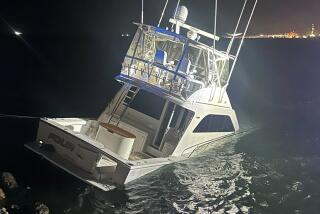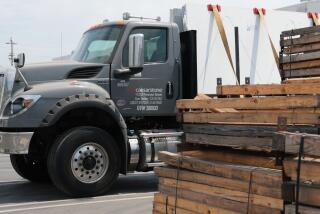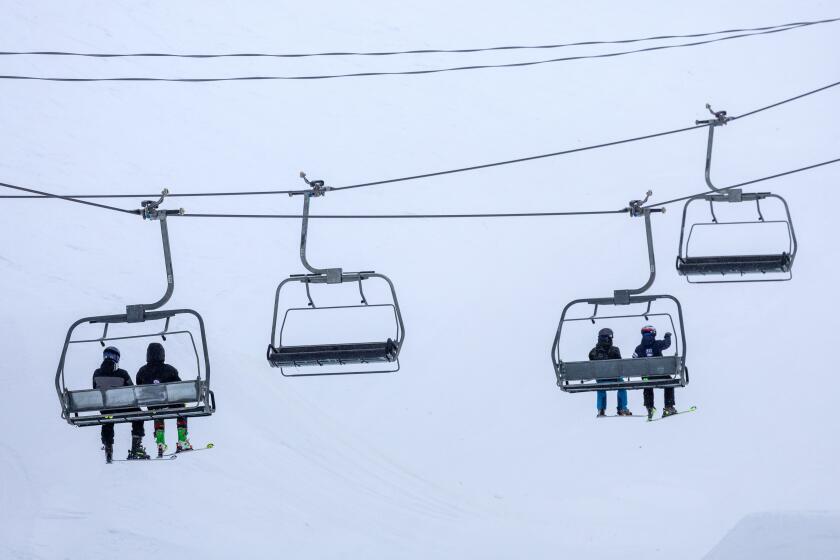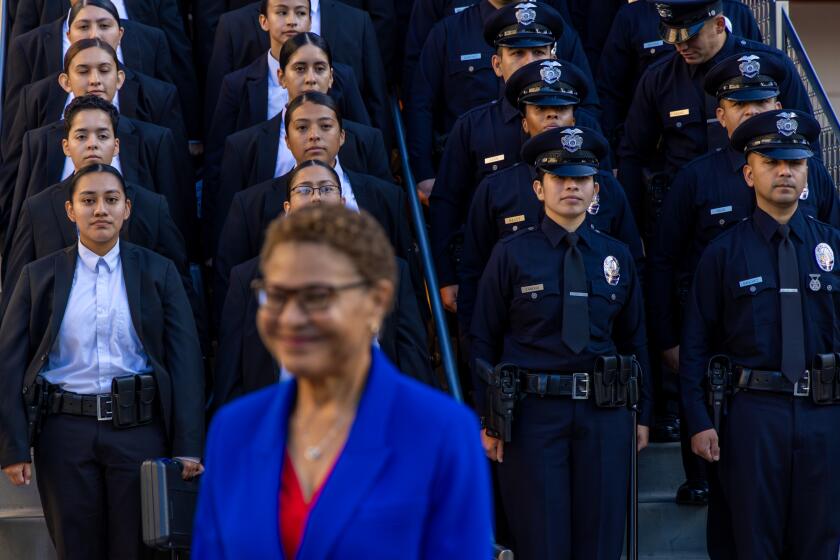D.A. Investigates Fatal Accident at Docks
- Share via
Kaiser International Corp. of San Pedro is under criminal investigation for allegedly ignoring hazards that led to the grisly death last year of a veteran longshoreman, according to a search warrant affidavit filed by the district attorney’s office.
The detailed court document includes not only the allegations of an investigator for the office but also claims by several dockworkers that working conditions at Kaiser’s coal-loading facility have long been regarded as perilous along the rugged industrial waterfront. The document also cites two serious accidents at Kaiser that preceded the 1996 death.
Said one veteran longshoreman: “With a blink of the eye, a person can easily be killed.”
That, according to the 50-page affidavit, is exactly what happened to Jimmie Magallanez, who died a year ago this week when a railroad boxcar struck him at the Kaiser yard.
Magallanez, who had worked on the docks 35 years and was two years from retirement, died after his body was nearly severed by the boxcar, according to the affidavit. His body was discovered on the tracks in the northwest corner of the yard, where empty boxcars move by gravity quickly and quietly down a hill before being hauled back for more coal, the document said.
The California Division of Occupational Safety and Health has issued five citations--and fines totaling more than $30,000--against Kaiser in connection with the incident. The state’s action is under appeal by Kaiser.
Company officials did not return phone calls Wednesday for comment about the criminal investigation, but the firm’s lawyer, Mark J. Werksmen, said Kaiser “absolutely denies that its actions caused Mr. Magallanez’s accidental death.”
Beyond that, Werksmen said there would be no comment until the district attorney’s office decides whether to file charges.
Michael Delaney, who heads the office’s Environmental Crimes/OSHA Division, also declined comment on the case, saying it remains under review for possible charges.
In court papers used to obtain search warrants, Henry Moraga, an investigator for the district attorney, said his inquiry turned up evidence of neglect by Kaiser.
“I will show, based on the facts contained in this affidavit, that Kaiser International Corp. and several of its employees . . . were aware of the serious hazards to which they were exposing their workers . . . yet failed to provide them with the proper training, equipment and safeguards that would have prevented the death of one of their employees,” he said.
“I am alleging that there were no controls to protect personnel during the rail car movement in the lower yard and that the death of Jimmie Magallanez is a direct result of Kaiser International Corp.’s failure to provide the proper safeguards,” Moraga added.
As underpinning for his allegations, he included statements from several dockworkers familiar with the Kaiser site, including one from a longshorewoman who has been unable to work since her leg was almost severed there by another boxcar.
In often graphic detail, Kaiser employee Martha Diaz recounted how a boxcar struck her Jan. 8, 1995, while she was struggling to disconnect air hoses that run between the cars.
“It all happened so fast,” she said. “I think, at that time, and because of the way I was positioned, I dove under the train.
“The next thing I saw was my right leg being pushed and squashed by the wheel of the car. I felt my blood vessels burst, and it became very hot,” Diaz said. “At the same time, I saw the wheel had stopped on my leg, leaving it dangling on the track. I then yelled for help, probably five to seven times.”
Using a bulldozer, she said, workers managed to push the boxcar off her, and she was taken to the hospital, where she lost consciousness. She wears a prosthetic device because of the accident.
In her July interview, Moraga said, Diaz recalled being totally unprepared for working conditions at the yard.
“You can’t hear the trains as they move on the track. . . . God, you can’t even see the trains, because they’re coming around the corner and they’re moving down the track too fast,” she told the investigator, who said she chastised him for not having looked into the site’s hazards earlier.
“If you had investigated and corrected the situation at the Kaiser yard when [another worker] was injured, maybe I wouldn’t have gotten hurt,” Diaz said, referring to an employee of the company who lost his left leg and part of his right foot when a boxcar struck him June 3, 1991.
“And if you had responded when I got run over by a train, Jimmie Magallanez would not have been killed by the same hazardous conditions that remain even to this day,” she said.
Rufus Atchley, who has worked along the waterfront since 1976, was at the Kaiser site the day Magallanez died and said in the affidavit that its rail car operation poses dangers unique to the port.
“When I first started work there, I tried to time the rail cars. I would hook the hoses and open the knuckles on the rail cars as fast as I could. One time, I had just released the air hoses and stepped back, when a rail car came slamming down into the parked train. It just missed me,” Atchley told Moraga.
“It’s a whole different ballgame at the Kaiser International yard compared to the rest of the waterfront operations,” he said, adding that most of the companies deal with cargo in containers, not boxcars. “You have to be constantly alert to the gravity moving rail cars,” he said.
Otherwise, Atchley suggested, the consequences are deadly. “With a blink of the eye,” he said, “a person can easily be killed.”
More to Read
Sign up for Essential California
The most important California stories and recommendations in your inbox every morning.
You may occasionally receive promotional content from the Los Angeles Times.










